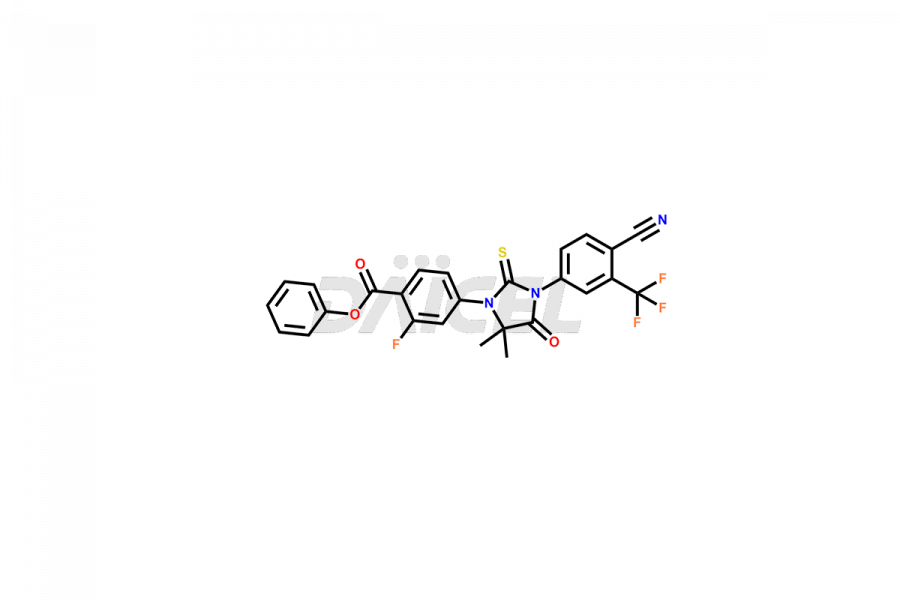Enzalutamide
References
- Sawyers, Charles L.; Jung, Michael E.; Chen, Charlie D.; Ouk, Samedy; Welsbie, Derek; Tran, Chris; Wongvipat, John; Yoo, Dongwon, “Diarylhydantoin Compound”, University of California, United States, EP1893196B1, March 29, 2006.
- Bennett, Daniel; Gibbons, Jacqueline A.; Mol, Roelof; Ohtsu, Yoshiaki; Williard, Clark, “Validation of a method for quantifying enzalutamide and its major metabolites in human plasma by LC-MS/MS”, Bioanalysis, Volume: 6, Issue: 6, Pages: 737-744, 2014.
- Ma, Xingling; Zhou, Wentao; Zou, Qiaogen; Ouyang, Pingkai, “Structural elucidation of the impurities in Enzalutamide bulk drug and the development, validation of corresponding HPLC method”, Journal of Pharmaceutical and Biomedical Analysis, Volume: 131, Pages: 436-443, 2016.
Frequently Asked Questions
How often should Enzalutamide impurities be monitored?
Enzalutamide impurities are monitored regularly during drug development, manufacturing, and post-marketing surveillance to ensure the quality and safety of the drug.
What is the impact of Enzalutamide impurities on patient safety?
Enzalutamide impurities affect patient safety due to toxicity, reduced efficacy, and increased risk of side effects.
How can the level of Enzalutamide impurities be reduced?
Purification techniques, such as recrystallization and chromatography, help reduce the level of impurities in Enzalutamide.
Are there any impurities in Enzalutamide that are considered particularly concerning?
N-desmethyl Enzalutamide, a known metabolite of the drug, is an impurity of concern. It has been found to have anti-androgenic activity and could potentially reduce the efficacy of Enzalutamide.
Note: Products protected by valid patents by a manufacturer are not offered for sale in countries having patent protection. The sale of such products constitutes a patent infringement, and its liability is at the buyer's risk.

